ARTICLE | February 01, 2023
Authored by FMF&E
-Syracuse, NY
On December 23, 2022, Congress passed the $1.7 trillion omnibus spending bill that contained several accounting and tax-related provisions, including the SECURE (Setting Every Community Up for Retirement Enhancement) 2.0 Act of 2022. This Act aims to improve retirement savings by making it easier for employers to offer retirement plans to employees and for individuals to increase their retirement savings. Following are selected provisions of the SECURE 2.0 Act and their potential impact on employers.
Automatic enrollment
New 401(k) and 403(b) plans established after December 29, 2022 will be required to automatically enroll employees and include an "eligible automatic contribution arrangement" (EACA) which sets a contribution rate of at least 3% but no more than 10%. The contribution rate will automatically increase by 1% each year, up to a maximum of 15% (10% for 401(k) safe harbor plans). Even though employees are automatically enrolled, they can opt out. Participants must have the right to withdraw automatic contributions within 90 days of the first contribution without being subject to the 10% early withdrawal penalty.
This provision will be effective for plan years beginning after December 31, 2024 to allow employers and plan providers a transition period to develop automatic enrollment procedures.
Small businesses with ten or fewer employees and new companies in operation for less than three years are exempt from this requirement. Additionally, governmental plans and church plans are also exempt.
Coverage for part-time workers
The Act expands mandated 401(k) coverage for long-term part-time workers by reducing the required years of service from three years to two years. Prior to this change, the SECURE Act of 2019 required employers with a 401(k) plan to allow employees who have worked at least 500 hours for three consecutive years to participate in the plan. This provision will also apply to ERISA-covered 403(b) plans. It will be effective for plan years beginning after December 31, 2024.
Emergency savings accounts
In 2024, employers will have the option to offer an emergency savings account through a defined contribution plan for non-highly compensated employees. The account will be linked to the plan, and the employer can enroll employees at a rate of up to 3% of their salary, with a maximum balance of $2,500 (or lesser set by the plan sponsor). Contributions to the account will be made after tax and are eligible for employer matching. Any matching funds must be contributed to the employee's retirement account, not the emergency savings account. Employers must allow participants to withdraw funds at least once per month.
Student loans
The Act allows employers to treat student loan repayments as elective deferrals for matching contributions. This means that starting from plan years after December 31, 2023, employees will be able to self-certify and receive matching contributions to their retirement plan for student loan payments made towards qualified higher education expenses. A qualified student loan payment is defined as any debt incurred by the employee solely for the purpose of paying for their own qualified higher education expenses.
Retirement plan database
The Act establishes a database that can be searched online and provides contact information for administrators of plans where a participant or beneficiary may have a benefit. This database will be created within two years of the Act's implementation. Starting in 2025, sponsors must provide the appropriate information to the Department of Labor to be included in the database.
Employer credits
The Act increases start-up plan credits for small employers. It increases the existing credit from 50% to 100% of qualified start-up costs for employers with up to 50 employees for the first three years after a plan is established.
The Act also provides for an additional employer credit for employers with up to 50 employees but is phased out for employers with between 51 and 100 employees. The amount of the additional credit generally will be a percentage of the amount contributed by the employer on behalf of employees, up to a per-employee cap of $1,000. The applicable percentage is 100% in the first and second years, 75% in the third year, 50% in the fourth year, and 25% in the fifth year. The credits also apply to new plans that join an existing plan, such as a Multiple Employer Plan (MEP) or a Pooled Employer Plan (PEP). These changes will be effective for taxable years beginning after December 31, 2022.
The information above is intended to be a brief overview of certain provisions of the SECURE 2.0 Act, but it is not a comprehensive list. If you would like more information on the Act, please contact our office to speak with one of our team members.

Our FMF&E team is eager to learn about you and your business! We are a Central New York based certified public accounting firm serving nationwide clients since 1980. Our experienced and dedicated team provides audit, accounting, tax and management consulting services to businesses located in throughout the United States. Our clients include many construction and real estate developers, credit unions, energy companies, manufacturers, professional service businesses and wholesalers and distributors.
FMF&E is a team of over 75 ambitious and highly motivated professionals of which 75% are Certified Public Accountants (CPAs). Certain professionals also possess specialty training in the area of business valuations (Certified Valuation Analysts) and merger and acquisitions (Certified Merger and Acquisition Advisor). Our growth has come from applying a strong results-oriented approach to servicing our clients.
For more information on how Firley, Moran, Freer & Eassa can assist you, please call (315) 472-7045.
